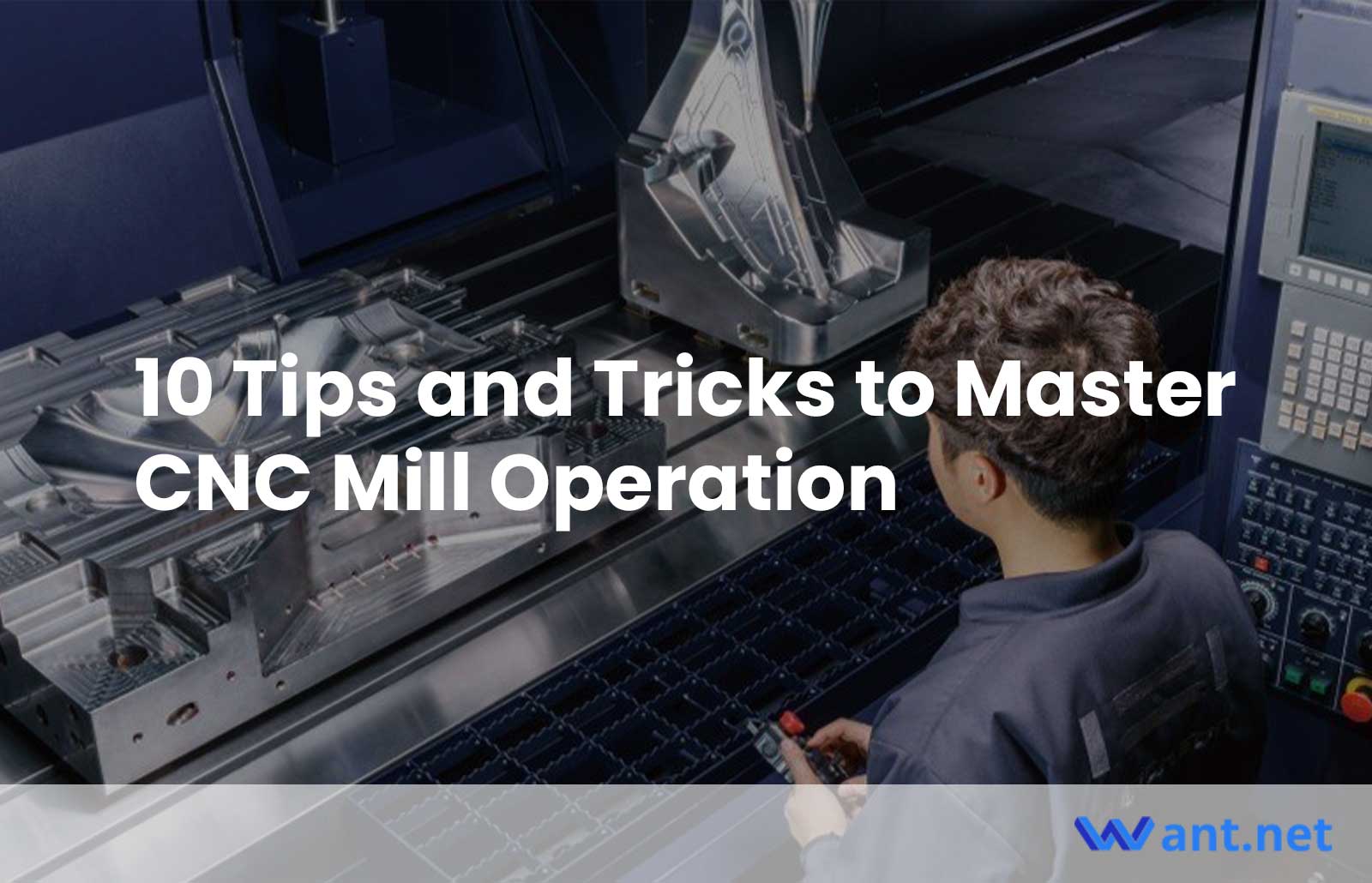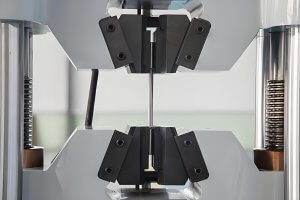CNC milling is a versatile and precise machining process that has revolutionized the manufacturing industry. Mastering the operation of a CNC mill is essential for achieving accurate and efficient results. In this article, we will provide you with 10 valuable tips and tricks to enhance your CNC mill operation skills. Whether you are a beginner or an experienced operator, these tips will help you optimize your machining processes and achieve outstanding outcomes.
Tip #1: Familiarize Yourself with CNC Mill Components
When starting your journey into CNC milling, it is crucial to familiarize yourself with the basic components that make up the machine. A CNC mill consists of several essential parts that work together to perform precise machining operations. These components include:
- Spindle
- Tool Changer
- Control Panel
- Axis System
Understanding the function of each CNC mill component is vital for successful operation. It enables you to troubleshoot issues, make informed decisions, and optimize machining processes. Knowing the spindle’s capabilities helps you select the appropriate cutting tools and speeds for different materials. Familiarity with the tool changer ensures efficient tool changes, reducing downtime. Proficiency in operating the control panel allows you to input commands accurately and make real-time adjustments. Finally, comprehending the axis system’s operation ensures precise positioning and movement of the cutting tool for accurate cuts.
Tip #2: Learn CNC Mill Programming
CNC mill programming relies on specific programming languages, primarily G-code and M-code. G-code is the standard language used to control CNC machines and define the tool’s movements, feed rates, and spindle speeds. M-code, on the other hand, is used to control auxiliary functions such as tool changes, coolant activation, and machine startup/shutdown.
Learning CNC mill programming is a crucial step towards mastering CNC milling. By acquiring proficient programming skills, you will gain control over the machining process, optimize toolpaths, and achieve exceptional results with your CNC mill. Keep practicing and refining your programming techniques to unlock the full potential of CNC milling.
Tip #3: Take Advantage of Simulation Software
Simulation software provides a visual representation of the CNC milling process, allowing you to simulate tool paths and verify the correctness of your programs. Several simulation software options are available in the market, each with its unique features and capabilities. Here are some popular simulation software solutions for CNC milling:
- Vericut
- Fusion 360
- Mastercam Simulator
- Siemens NX
Before selecting simulation software, consider your specific requirements, budget, and compatibility with your CNC milling machine. Research and explore demos or trial versions to evaluate which software best suits your needs.
Tip #4: Master Tool Selection and Setup
Selecting the appropriate tools for CNC milling is crucial for achieving optimal results. Once you have selected the right tools, it’s essential to set them up correctly in the CNC milling machine. Follow these techniques for proper tool setup:
- Secure Tool Holders: Ensure that the tool holders are securely tightened in the machine spindle. Loose or improperly secured tool holders can result in vibration, poor surface finish, or even tool ejection during operation.
- Tool Length Measurement: Accurate tool length measurement is vital for proper tool setup. Use a tool presetter or height gauge to measure the tool length precisely. This information is crucial for programming tool paths and avoiding collisions.
- Tool Diameter Compensation: Incorporate tool diameter compensation when programming tool paths. This feature offsets the tool’s actual diameter, compensating for any deviations and ensuring precise machining.
- Tool Runout Inspection: Check for tool runout, which refers to the deviation of the tool’s rotation from its intended axis. Excessive runout can cause irregular cutting forces, reduced tool life, and poor surface finish. Regularly inspect and replace tools with excessive runout.
Recommended Read: 7 Amazing Projects You Can Create with CNC Mills
Tip #5: Optimize Cutting Parameters
To achieve efficient and precise CNC milling, it is crucial to understand the cutting parameters and their impact on the machining process. The three key cutting parameters are:
- Speed
- Feed
- Depth of Cut
Optimizing cutting parameters for different materials ensures efficient machining and excellent results. Consider the following strategies:
Material Characteristics: Understand the properties of the material being machined, such as hardness, toughness, and thermal conductivity. Different materials require different cutting parameters. For example, softer materials like aluminum may require higher cutting speeds, while harder materials like steel may need lower speeds.
- Start with Recommendations: Consult tooling manufacturers, cutting tool catalogs, or online resources for recommended cutting parameters based on the material you are working with. These recommendations provide a starting point for optimizing your parameters.
- Experiment and Iterate: Conduct test cuts and evaluate the results to refine the cutting parameters. Start with conservative parameters and gradually increase speeds and feeds while monitoring tool performance, surface finish, and dimensional accuracy. Find the optimal balance between productivity and tool life.
- Consider Tool Coatings: Utilize cutting tools with appropriate coatings for specific materials. Coatings such as TiN, TiCN, or AlTiN can improve tool life, reduce friction, and enhance chip evacuation.
Tip #6: Implement Effective Workholding Techniques
Workholding refers to the methods used to secure the workpiece in place during CNC milling. Effective workholding ensures stability, accuracy, and safe machining. Here are some commonly used workholding methods:
- Vices: Vices are versatile and widely used for securing workpieces. They provide a firm grip and are suitable for various shapes and sizes. Vices can be mounted on the machine table or a fixture plate, offering flexibility in workpiece positioning.
- Clamps: Clamps are used to hold the workpiece against fixed or movable stops. They come in different types, such as toggle clamps, step clamps, and strap clamps. Clamps are useful for securing irregularly shaped or thin workpieces.
- Fixtures: Fixtures are specialized workholding devices designed for specific parts or production runs. They provide precise positioning and repeatability. Fixtures may include locating pins, stops, and clamping elements tailored to the workpiece requirements.
Proper workpiece alignment and securing are crucial for achieving accurate and consistent machining results. Consider the following tips:
- Alignment: Ensure the workpiece is aligned accurately with the machine’s coordinate system. Use edge finders or probing techniques to locate reference points on the workpiece and align them with the machine’s origin.
- Squareness and Parallelism: Check the squareness and parallelism of the workpiece with respect to the machine axes. Use dial indicators or precision squares to verify perpendicularity or alignment.
- Secure Fastening: Use appropriate clamping methods to secure the workpiece firmly. Distribute clamping forces evenly to avoid workpiece distortion. Use the minimum necessary clamping force to prevent excessive deformation.
- Avoid Interference: Check for potential interference between the workpiece, cutting tool, and machine components. Ensure there is sufficient clearance for the tool’s movement and chip evacuation.
Tip #7: Utilize Toolpath Strategies
Toolpath strategies determine the movement of the cutting tool during CNC milling operations. Optimizing the toolpath ensures efficient material removal and enhances the machining quality. Here are some tips for optimizing the toolpath:
- Cut Direction: Consider the optimal cutting direction to minimize tool travel and improve chip evacuation. Adjust the toolpath to minimize tool retractions and optimize cutting conditions.
- Stepover and Stepdown: Adjust the stepover and stepdown parameters to achieve the desired surface finish and tool life. Smaller stepover values produce finer finishes, while larger stepdown values improve efficiency but may affect surface quality.
- Toolpath Optimization Software: Utilize advanced CAM software that offers toolpath optimization capabilities. These software tools can automatically optimize toolpaths to reduce machining time, minimize tool wear, and improve surface finishes.
- Toolpath Verification: Always simulate and verify the toolpath using CNC simulation software before actual machining. This ensures that the toolpath is collision-free, accurately follows the desired geometry, and provides the desired machining results.
Tip #8: Embrace Tool and Workpiece Probing
To make the most of tool and workpiece probing, it’s essential to follow proper techniques for accurate measurements and alignments. Here are some techniques to consider:
Tool Length Measurement:
- Calibrate the probing system: Before measuring tool lengths, ensure that the probing system is calibrated and properly aligned with the machine axes.
- Establish a consistent measurement reference: Determine a consistent reference point on the tool holder or spindle for all tool length measurements.
- Use precise touch-off methods: Employ reliable touch-off methods to establish the exact point of contact between the tool and the probing sensor. This ensures accurate tool length measurements.
Workpiece Alignment:
- Establish reference points: Define reference points on the workpiece that can be probed consistently for alignment purposes.
- Utilize probing cycles: CNC control systems often provide probing cycles specifically designed for workpiece alignment. Take advantage of these cycles to automate the alignment process accurately.
- Verify alignment: After alignment, verify the accuracy by probing additional reference points and comparing them to the programmed coordinates. Make any necessary adjustments if deviations are detected.
Tip #9: Implement Effective Chip Management
Consider the following techniques for effective chip management:
Importance of Proper Chip Management:
- Preventing tool damage: Effective chip management helps prevent chips from interfering with the cutting tool, reducing the risk of tool damage or breakage.
- Ensuring surface finish quality: Proper chip evacuation prevents chips from re-cutting, which can negatively impact the surface finish of the workpiece.
- Enhancing tool life: Efficient chip management reduces heat buildup and tool wear, resulting in extended tool life and improved machining performance.
Techniques for Chip Evacuation and Prevention:
- Selection of appropriate cutting parameters: Optimize cutting speed, feed rate, and depth of cut to promote efficient chip formation and evacuation.
- Clearing the cutting zone: Utilize cutting techniques and toolpaths that allow for effective chip evacuation, ensuring that chips are cleared from the cutting area promptly.
- Implementation of coolant and lubrication: Proper coolant and lubrication help facilitate chip evacuation, reduce friction, and enhance the overall machining process.
Tip #10: Practice Safe Operating Procedures
Safety should always be a top priority when operating a CNC mill. By following proper safety procedures, you can protect yourself and others while ensuring smooth and secure operations. Consider the following guidelines:
- Familiarize yourself with the CNC mill: Understand the machine’s operation, emergency stop procedures, and safety features. Read and follow the manufacturer’s guidelines and safety instructions.
- Conduct regular maintenance checks: Keep the machine in good working condition by performing routine inspections, maintenance, and lubrication as recommended by the manufacturer.
- Secure workpieces and tools properly: Ensure workpieces are securely clamped or fixtured to prevent movement during machining. Verify that tools are correctly inserted, tightened, and aligned.
- Clear the work area: Remove any potential hazards, debris, or obstructions from the work area to create a safe and organized environment for machining operations.
- Follow lockout/tagout procedures: When performing maintenance or repairs, adhere to lockout/tagout procedures to ensure the machine is safely powered off and cannot be operated accidentally.
- Train and educate personnel: Provide proper training and ongoing education to operators and other personnel regarding machine safety, emergency procedures, and the use of personal protective equipment.
Other Articles You Might Enjoy
- The Role of Precision in CNC Machining: How Tight Tolerances Impact Cost and Quality?
Introduction: Understanding Precision in CNC Machining In manufacturing contexts, precision is epitomized by Computer Numerical Control (CNC) machining. In essence, CNC machining is a process utilized widely within the manufacturing…
- Maximizing Precision in CNC Machining: Techniques and Tips
Importance of Precision in CNC Machining Precision is an fundamental component in the field of Computer Numerical Control (CNC) machining. It entails producing parts that are not only accurate but…
- Harnessing Bead Blasting in CNC Machining(shell mill Lilith)
In the realm of CNC machining, precision and surface finish are paramount. Manufacturers are constantly seeking innovative techniques to enhance the quality and aesthetics of their machined components. One such…






